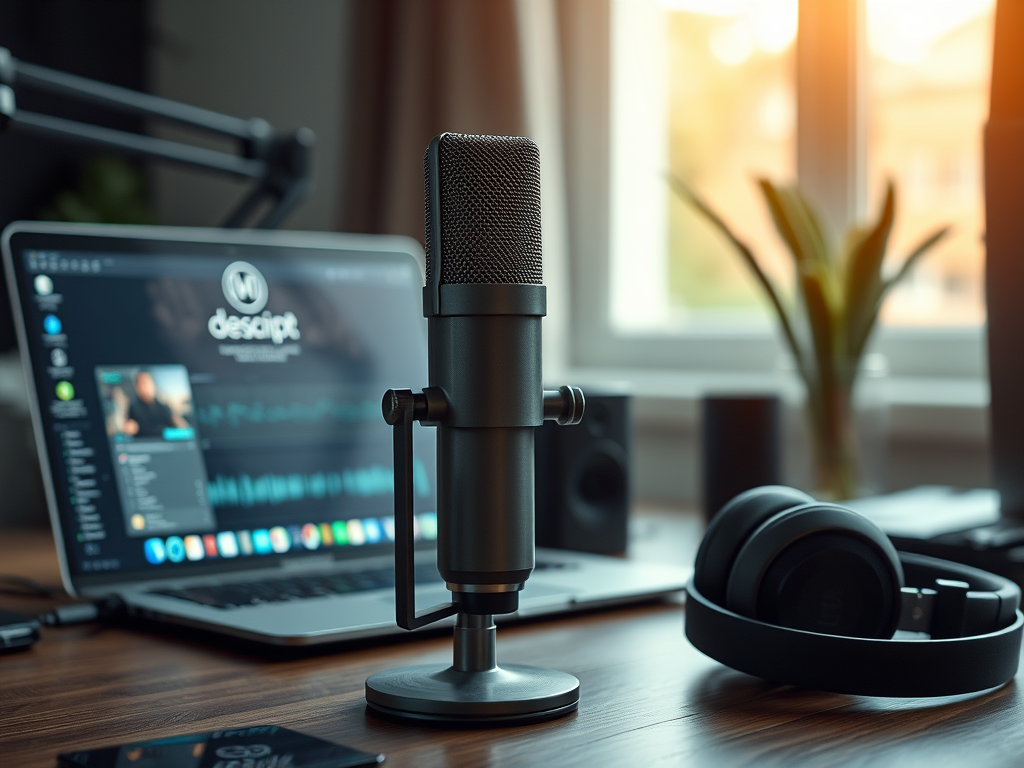Descript in 2024: A Veteran Podcaster's Perspective

As a podcaster with over 15 years of experience, I've witnessed a lot of podcast tools come and go.
Today, I'm taking a closer look at Descript, a tool that has become a staple in the podcast (and now video!) creation community.
While Descript has made significant strides in the right direction, there are still areas that could use improvement. Let's explore the current state of Descript and what it means for podcast creators in 2024!
Performance Improvements: A Smoother Experience
One of the most noticeable changes in Descript over the past year has been its performance enhancements.
The application now runs more smoothly, with fewer hiccups and delays. This improvement is particularly evident when working with longer projects or more complex edits. The increased responsiveness makes the editing process more efficient and less frustrating, especially for those of us who spend hours fine-tuning our content.
Editing in the timeline, however, can still be a bit of a drag (pun intended.)
I don't have any real world benchmarks, but the overall feeling is much snappier these days everywhere but the lower 3rd of the app. If Descript is your first editing app as a novice podcaster, you probably won't even notice it. But having spent time in my other daily drivers like Screenflow or Davinci Resolve -- it has some catching up to do.
AI Features: A Double-Edged Sword
Descript's AI-powered features have been a major marketing point, and they continue to evolve.
Tools like filler word removal and gap reduction are incredibly useful for streamlining your content. However, some of the more advanced AI features, such as removing retakes and editing for clarity, come with caveats.
While these features can be helpful for short-form content, they fall short when working on longer projects. The lack of a historical view of revisions makes it difficult to track changes made by the AI. This limitation can be particularly problematic when collaborating with others or when you need to revisit earlier versions of your work.
At the end of the day: I might not trust AI all that much.
If I want to roll back major AI edits, or quickly scan how much of my project was modified by AI, I can't really get a sense of that impact.
Then there's working with, what I'll call, "important AI content" in a tiny little sidebar. It's not the place I want to spend time editing or revising the blog post I just had Underlord craft for me.

Transcript Editing: The Core of Descript
The ability to edit audio and video through a transcript remains Descript's standout feature.
This approach to editing is intuitive and efficient, especially for those who are more comfortable working with text -- or editing a podcast with no prior experience. The improved performance over the last few months makes it easier than ever to fine-tune your content.
One technique I've found particularly useful is using strikethrough instead of deleting content.
This method allows you to keep potentially useful material in your script without it affecting the final output. It's a simple yet effective way to maintain context and preserve options as you refine your work.
This is where I'd like to see the AI edits evolve into, some sort of non-destructive revision feature.
User Interface: Steps in the Right Direction
Descript's UI has seen significant improvements, with a more intuitive layout and easier access to key features.
The sidebar now provides quick access to layers, scene elements, and project assets. This reorganization makes it easier to manage complex projects and streamlines the workflow for adding various elements to your content.
However, the AI-generated content, such as show notes, still feels somewhat isolated. The lack of an archive or easy way to edit and save this content outside of the small sidebar panel can be limiting, especially when collaborating or refining the AI-generated text.
Stock Assets and Multi-cam Editing: Expanding Possibilities
The inclusion of stock images and videos directly within Descript is a welcome addition, particularly for creators working on short-form content.
While it may not be as crucial for long-form podcasts, it does expand the possibilities for creating more diverse content within a single platform.
The automatic multi-cam feature for switching between active speakers is another standout addition. This is something I'm using on almost every interview podcast I publish. A real staple feature now. This tool significantly streamlines the editing process for interviews and multi-person podcasts, saving time and effort in post-production.
File Management: A Major Pain Point
Despite the many improvements, file management remains a significant issue in Descript.
The inability to bulk delete projects or efficiently manage files across different devices can be frustrating, especially for creators with lots of projects.
I simply don't want to store old projects, or have them eat up harddrive space on over-priced Mac storage! I can assume why Descript wants you to store a bunch of content on their servers -- probably helps with upselling future storage plans OR training AI data -- but give us a select ALL delete option.
Descript is a Powerful Tool with Room to Grow
Descript has made significant strides in becoming a more robust and user-friendly platform for content creators. Its unique approach to editing through transcripts, combined with powerful AI features and improved performance, makes it a valuable tool for podcasters and video creators alike.
However, there are still areas where Descript could improve, particularly in timeline editing, file management, and the integration of AI-generated content. As the platform continues to evolve, addressing these issues will be crucial in solidifying its position as a go-to tool for content creators of all levels.
For podcasters and content creators looking for an all-in-one solution, Descript offers a compelling package. Its continuous updates and improvements show a commitment to meeting the evolving needs of creators. While it may not replace specialized tools for every aspect of production, Descript's unique features and user-friendly approach make it a valuable addition to any content creator's toolkit.




